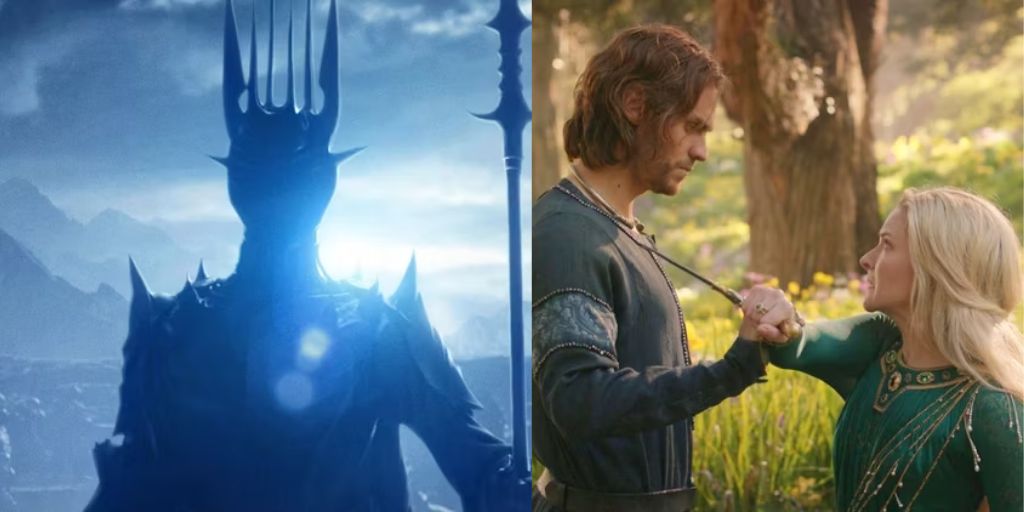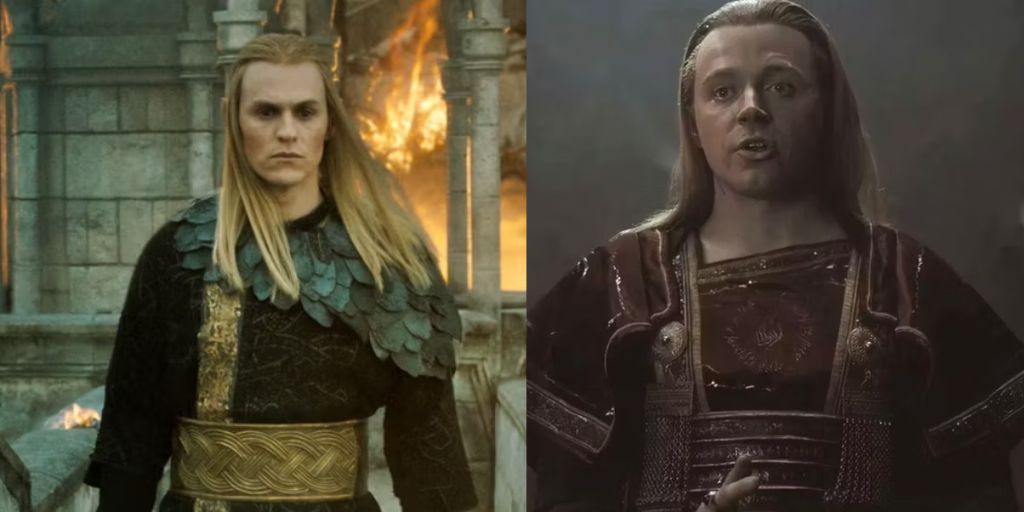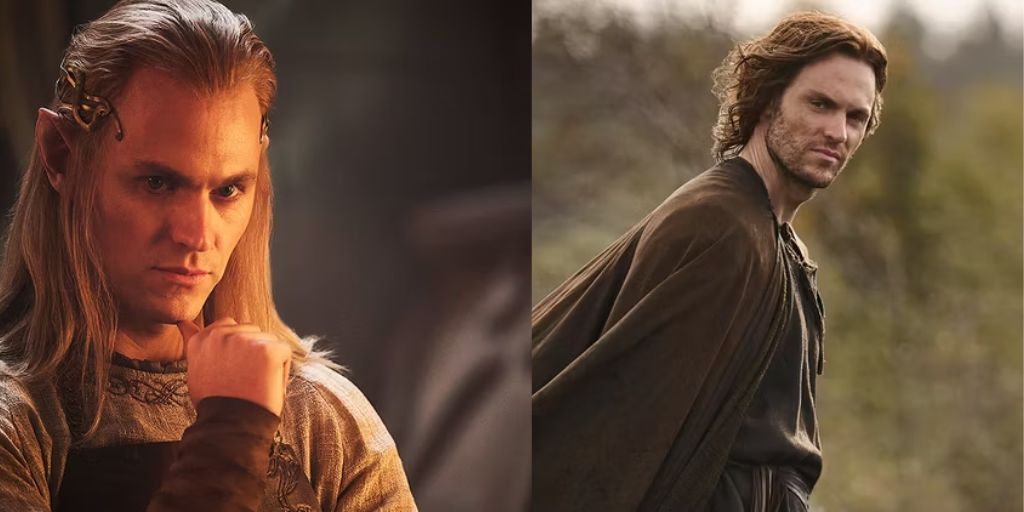Season 2 of The Rings of Power has returned, bringing a darker and more complex storyline with new actors joining the cast. This season introduces both new characters and updates to familiar ones. Sam Hazeldine has taken over the role of Adar from Joseph Mawle.
Jack Lowden now shares the role of Sauron with Charlie Vickers. In Season 1, the identity of Sauron was shrouded in mystery. It was only in the final episode that it was revealed Halbrand, who claimed to be the King of the Southlands, was actually the Dark Lord himself.
This revelation put Galadriel (Morfydd Clark) in a difficult situation, as she had previously trusted Halbrand and invited him into her home. Halbrand had also been involved in Celebrimbor’s (Charles Edwards) project to save the Elves’ dying tree with mithril, adding another layer of complexity to the story.
The central focus of Season 2 is on the betrayal by Halbrand and his true identity. The Elves are now debating whether the three rings Halbrand helped create will save their kind or are tainted by Sauron’s influence. This debate is central to the season’s plot.
Lowden’s portrayal of Sauron is notably different from the rugged figure seen in Season 1. This new Sauron has an elf-like appearance, with long hair and a regal demeanor. The change in appearance makes sense in the context of the story, as Halbrand was merely a disguise for Sauron.
The disguise allowed Sauron to cause chaos without being easily recognized. With Vickers also returning as Sauron, the recast is clearly part of the story’s direction rather than an issue with actor availability. This choice fits well with the story being told and aligns with the mythology created by J.R.R. Tolkien.
Sauron’s Flashback and Transformation Process
The opening of Season 2 includes a flashback that reveals a confrontation between Sauron and Adar. After Morgoth’s defeat, Sauron supposedly vanished, and Adar claimed to have killed him. However, when Adar encounters Halbrand, he does not react as if he recognizes him.
The flashback fills in the gaps by showing Sauron’s rise to power after Morgoth’s fall. During his coronation, Sauron threatens and taunts the Orcs, whom Adar has a strong affection for. In retaliation, Adar leads a rebellion and attacks Sauron with his own crown. The Orcs then swarm Sauron and attack him brutally, but as a Maiar, Sauron cannot be killed.

This scene provides context for Sauron’s hatred towards Adar, illustrating that although they are both enemies of the heroes, they are not allies. This conflict suggests a power struggle for Mordor as the heroes attempt to destroy it.
The flashback also reveals Sauron’s ability to change his form, which explains why Adar did not recognize him in Season 1. This ability to change shape helps Sauron continue to deceive Galadriel and the Elves, maintaining the mystery around his true identity.
The Process of Sauron’s Transformation
Sauron, known for his ability to deceive, does not change forms easily. After being attacked by Adar and the Orcs, Sauron becomes a blob-like substance and hides in a cave.
In a sequence reminiscent of horror films, Sauron’s gooey remains kill a rat and then a human traveler before fully transforming into Halbrand. This sequence provides a backstory for Halbrand and shows the unsettling process of Sauron’s transformation.
Sauron’s transformation after nearly dying reflects his claim to the Orcs that “after a defeat, the shadow takes another shape.” After his apparent death, Sauron needed a new body to evade Adar and plan his revenge. Halbrand is an ideal disguise because he looks nothing like the Sauron Adar remembers.
Season 2 shows Halbrand convincing Adar that Galadriel is working with Sauron. This deception allows Halbrand to leave in search of Sauron, proving that Adar is still unaware of Halbrand’s true identity. However, the process of such drastic changes is complex.
When Sauron transforms into Annatar in front of Celebrimbor, Vickers still plays the character, making that form more recognizable. This indicates that drastic transformations take significant effort, potentially allowing Galadriel and Elrond (Robert Aramayo) to be safe for the time being.
Sauron’s Changing Forms and Tolkien’s Influence
Although Tolkien did not detail how Sauron changes forms, he wrote about Sauron using different names and remaining unrecognized. For instance, Sauron adopted the form of Annatar in the Second Age, which is being adapted in The Rings of Power.
This change occurred after Sauron’s defeat when Morgoth was killed, requiring a new plan from the cunning character. Sauron also took on different forms after his defeat in the Last Alliance of Elves and Men.
According to Tolkien, after this battle, Sauron was in a weakened, non-corporeal state, which matches The Rings of Power’s portrayal. Later, in the Third Age, he returned as the Necromancer, once again not recognized by Middle-earth’s immortal beings.

Sauron’s ability to change forms adds tension to The Rings of Power, keeping his identity hidden and allowing for more complex schemes. The change in actors emphasizes the difference in Sauron’s forms, making his deception of Adar more credible.
While the story is just beginning, the portrayal of Sauron in the show is engaging and respects Tolkien’s writings. Although it was surprising to see this new portrayal initially, showing Lowden as Sauron in the flashback ultimately benefits the show and adds depth to the storyline. The evolving depiction of Sauron not only enriches the narrative but also honors the intricacies of Tolkien’s universe.




